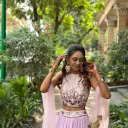5 Puppet Theatre Traditions Across India You Can Still Watch
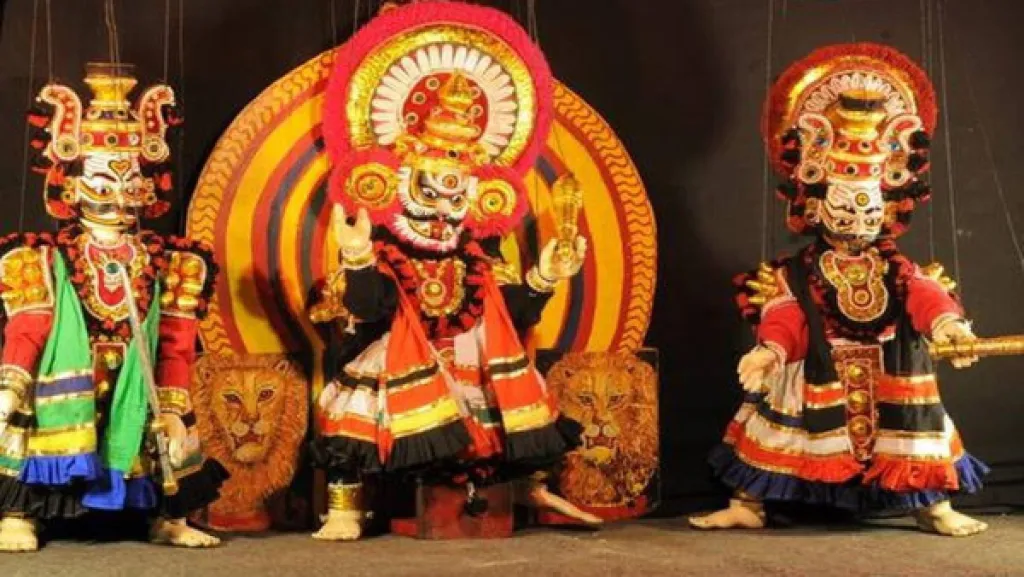
India is a land of amazing stories and ancient art. Long before movies and TV, puppets were the stars! These little dolls, controlled by strings, rods, or hands, brought epic tales and funny social messages to life.
While many of these arts are slowly fading, a few special traditions still survive. Here are five dynamic puppet shows from across India that are worth seeking out today.
5 Puppet Shows from across India
1. Kathputli (Rajasthan): The Famous String Dolls
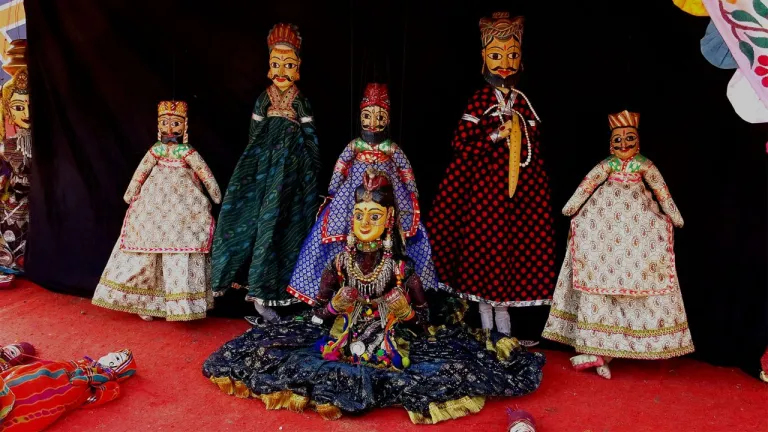
Type: String Puppetry (Marionette)
When most people think of Indian puppets, they picture Kathputli. These are the iconic dolls of Rajasthan.
The Puppets: They are carved from wood (Kath means wood, and Putli means doll). They have large, striking faces, wear bright Rajasthani clothes, and, interestingly, don't have any legs—their long skirts cover the bottom half.
The Show: The performers, often from the nomadic Bhat community, control them with just a few strings. The most memorable part is the puppeteer's voice: a high-pitched, squeaky sound produced with a special reed, making the performance thrilling and dramatic.
The Stories: They typically tell tales of Rajput heroes, battles, and royalty, often mixing in some humor about social issues.
Where to Watch:
Rajasthan: Look for cultural evening shows in tourist cities like Jaipur and Udaipur (at venues like Bagore Ki Haveli).
New Delhi: The famous Kathputli Colony is a traditional home for many puppeteer families.
2. Tholu Bommalata (Andhra Pradesh): The Colored Shadows
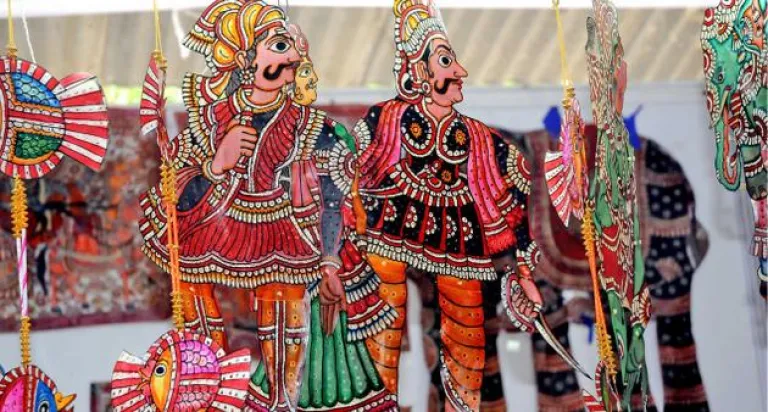
Type: Shadow Puppetry
In Andhra Pradesh, the show is all about light and shadow. Tholu Bommalata literally means 'dance of leather dolls.'
The Puppets: These flat, large dolls are cut from leather (usually deer or goat skin). They are painted with bold, bright colors.
The Show: The puppeteers press these dolls against a white screen with a strong lamp behind it. Unlike plain black shadows, these dolls are translucent, so the audience sees large, beautiful, colored shadows dancing on the screen. The performances are often grand and accompanied by classical music.
The Stories: They mostly focus on stories from the great Hindu epics, the Ramayana and the Mahabharata.
Where to Watch:
Andhra Pradesh: This is a rural art form, so you’ll most likely see performances during village fairs and temple festivals in the state.
3. Pavakathakali (Kerala): The Kathakali in Miniature
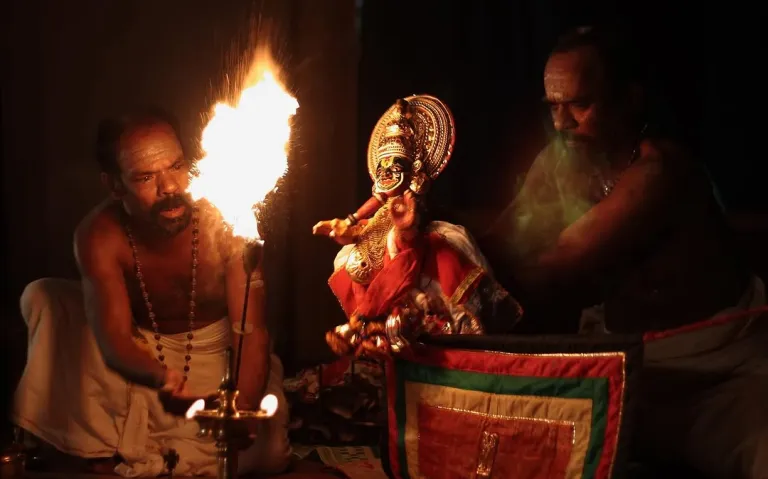
Type: Glove Puppetry (Hand Puppetry)
This tradition from Kerala is a tiny version of the grand classical dance, Kathakali.
The Puppets: Small, wooden dolls (about 1–2 feet tall) carved and dressed exactly like a human Kathakali dancer, complete with the famous elaborate headgear and detailed makeup.
The Show: The puppeteer wears the doll like a glove, using their fingers to move the head and arms. The performance uses the same dramatic drums and music as a full Kathakali show, making it a very high-energy experience.
The Stories: They share the same mythological stories of gods and demons as the human dance.
Where to Watch:
Kerala: Search for shows in the Malabar region, particularly around the towns of Palakkad and Thrissur, usually performed for religious festivals.
4. Putul Nach / Yampuri (Eastern India): The Rod Stars
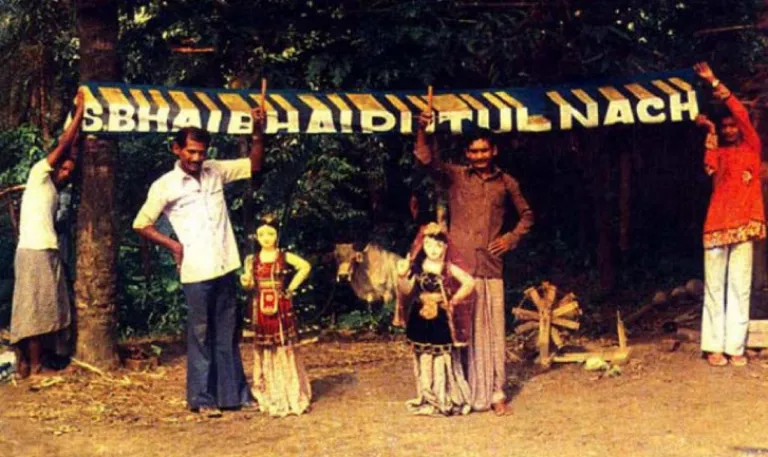
Type: Rod Puppetry
Found mostly in West Bengal and Bihar, these puppets are much bigger and controlled by stiff rods, giving them a very upright, dramatic posture.
The Puppets: They are made of wood and are quite large (often 3–4 feet tall). In West Bengal (Putul Nach), they have joints at the neck and shoulders. In Bihar (Yampuri), they might be carved from a single piece of wood with no joints at all!
The Show: The puppeteer stands behind a curtain, holding the main rod that supports the puppet's weight. The performance is usually very dynamic and is often accompanied by a lively music group.
The Stories: They perform local folk tales and legends, and sometimes use the shows to educate people on social topics.
Where to Watch:
West Bengal: Often seen at cultural gatherings and village fairs in the southern districts.
Bihar: Keep an eye out for local puppet groups performing in the Mithila region.
5. Togalu Gombeyatta (Karnataka): The Status Shadows
Type: Shadow Puppetry
Another shadow play, this one is from Karnataka. Togalu Gombeyatta is different from the Andhra style because of how it uses size.
The Puppets: These dolls are also made of colorful leather, but they are generally smaller than the Andhra puppets.
The Show: In this tradition, a puppet's size shows their social standing. Gods and kings are large figures, while servants and common people are much smaller.
The Stories: The shows draw on local legends and parts of the great epics. They were traditionally performed as rituals to bring good luck or even rain!
Where to Watch:
Karnataka: This art is mainly seen during village festivals (jatre) and religious events in central and northern Karnataka.
Final Words
These ancient puppet traditions are not just entertainment; they are living pieces of India's history and culture. By seeking out a local show, you're not only watching a magical performance but also helping keep this unique art form alive for future generations!
Published at
About Author
Tashvi Gala
Subscribe our Newsletter
Get our weekly tips and travel news!
Related Posts
10 Most Famous Monuments to Visit in India
Experience the rich heritage and architectural marvels of this diverse land...
10 Must-See Sights in Jaipur, India’s Pink City (2023)
India, with its mysterious and exotic charms, is just the sort of country that even a whole lifetime spent exploring wouldn’t be able to suffice. From the majestic Himalayan mountain peaks to charm...
10 Unique Cultures of India That You Must Experience Once in Lifetime
From the Himalayas to Kerala, discover 10 unique cultures that will leave you breathless.
12 Must-Visit Historical Sites in Hyderabad
The "City of Nizams," Hyderabad, is a city with a long history and many interesting historical landmarks. These locations, such as the recognizable Charminar and the Golconda Fort, provide a window into the city's rich cultural legacy.
15 Beautiful Cultural Heritage Sites in South India
Immerse yourself in the architectural wonders, cultural traditions, and rich history that make this region a treasure trove of cultural gems.
Latest Posts
5 New Year Brunch Buffets in Bengaluru Worth Trying
Kick off 2026 with an extravagant New Year's Day brunch! Top Bengaluru hotels offer heavenly dishes. Book your spot!
Navi Mumbai Airport Opens December 25, 2025: India's Largest Greenfield Airport Takes Off
Mumbai becomes the first Indian city with two international airports as flights begin Christmas Day.
Top 7 Most Instagrammable Spots to Celebrate Christmas in India (2025 Guide)
India offers snowy peaks and sunlit beaches for Christmas photos! Discover 7 highly Instagrammable spots, from Goa to Shimla.
Travel Alert: IndiGo Cancels Over 200 Flights Across India in December 2025
Thousands face travel chaos as crew shortage disrupts major airports nationwide.
5 rooftop NYE Celebrations in mumbai with sea views
5 ultimate Mumbai rooftop parties for NYE! Celebrate with luxury, fireworks, and the best views of the Arabian Sea.

